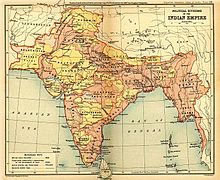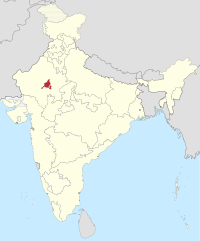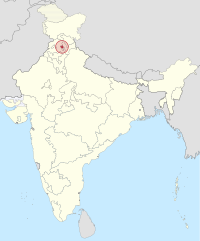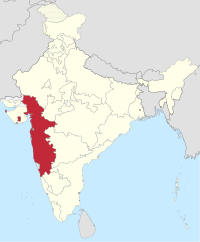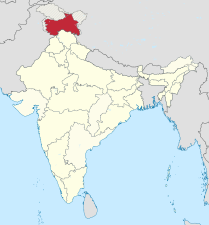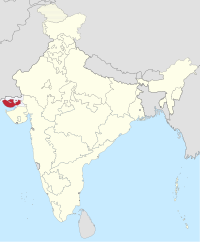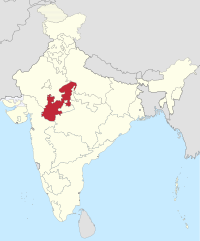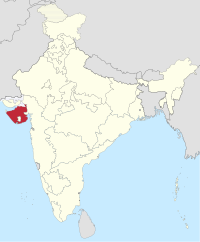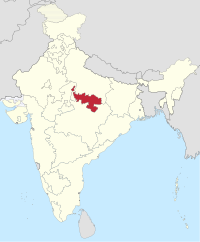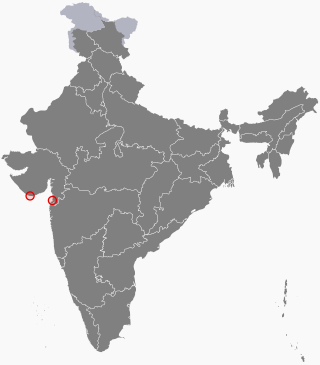
Daman and Diu was a union territory in northwestern India. With an area of 112 km2 (43 sq mi), it was the smallest administrative subdivision of India on the mainland. The territory comprised two districts, Daman and Diu island, geographically separated by the Gulf of Khambat. The state of Gujarat and the Arabian Sea bordered the territory. A Portuguese colony since the 1500s, the territories were taken by India with the Annexation of Goa in 1961. Daman and Diu were administered as part of the union territory of Goa, Daman and Diu between 1961 and 1987. After the Goa Opinion Poll, they became a separate union territory. In 2019, legislation was passed to merge the union territory of Daman and Diu with its neighbouring union territory, Dadra and Nagar Haveli, to form the new union territory of Dadra and Nagar Haveli and Daman and Diu with effect from 26 January 2020.
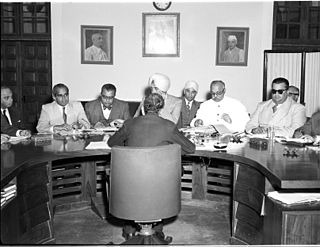
Rajpramukh was an administrative title in India which existed from India's independence in 1947 until 1956. Rajpramukhs were the appointed governors of certain Indian provinces and states.
The Indian Republic held its first elections in 1951–52.

Mysore State, colloquially Old Mysore, was a political territory within the Dominion of India and the subsequent Republic of India from 1947 until 1956. The state was formed by renaming the Kingdom of Mysore, and Bangalore replaced Mysore as the state's capital. When Parliament passed the States Reorganisation Act in 1956, Mysore State was considerably enlarged when it became a linguistically homogeneous Kannada-speaking state within the Republic of India by incorporating territories from Andhra, Bombay, Coorg, Hyderabad, and Madras States, as well as other petty fiefdoms. It was subsequently renamed Karnataka in 1973.
The high courts of India are the highest courts of appellate jurisdiction in each state and union territory of India. However, a high court exercises its original civil and criminal jurisdiction only if the subordinate courts are not authorized by law to try such matters for lack of peculiar or territorial jurisdiction. High courts may also enjoy original jurisdiction in certain matters, if so designated, especially by the constitution, a state law or union law.

The provinces of India, earlier presidencies of British India and still earlier, presidency towns, were the administrative divisions of British governance on the Indian subcontinent. Collectively, they have been called British India. In one form or another, they existed between 1612 and 1947, conventionally divided into three historical periods:

The constitutional power to create new states and union territories in India is solely reserved with the Parliament of India, which can do so by announcing new states/union territories, separating territory from an existing state or merging two or more states/union territories or parts of them. As of 2024, there are 28 states and eight union territories in India.

The National Football Championship for Santosh Trophy, due to ties with FIFA, also known as the FIFA Santosh Trophy, or simply Santosh Trophy, is an inter-state national football competition contested by the state associations and government institutions under the All India Football Federation (AIFF), the sport's governing body in India. Before the launch of the first national club league, the National Football League in 1996, the Santosh Trophy was considered the top domestic tournament in India. Many players who have represented India internationally have played in the Santosh Trophy. The tournament is held every year with eligible teams who are divided into zones, must play in the qualifying round and can progress into the tournament proper. The current champions are Karnataka, who won their title after 54 years during the 2022–23 edition. This was the first trophy for Karnataka, which had previously won four times as the princely state of Mysore, after 1968-69.
The States Reorganisation Commission (SRC) constituted by the Central Government of India in December 1953 to recommend the reorganization of state boundaries. In September 1955, after two years of study, the Commission, comprising Justice Fazal Ali, K. M. Panikkar and H. N. Kunzru, submitted its report. The commission's recommendations were accepted with some modifications and implemented in the States Reorganisation Act in November, 1956. The act provided that India's state boundaries should be reorganized to form 14 states and 6 centrally administered territories. On December 10, 1948, the report of Dar Commission was published but the issue remained unsolved.

The following outline is provided as an overview of, and topical guide to, India:

A union territory is a type of administrative division in the Republic of India. Unlike the states of India, which have their own governments, union territories are federal territories governed, in part or in whole, by the Union Government of India. There are currently eight union territories in India: Andaman and Nicobar Islands, Chandigarh, Dadra and Nagar Haveli and Daman and Diu, Delhi (NCT), Jammu and Kashmir, Ladakh, Lakshadweep and Puducherry.

The Senior Women's National Football Championship for Rajmata Jijabai Trophy, also known as Senior Women’s National Football Championship or simply the Rajmata Jijabai Trophy since 2024, is a women's football tournament contested by state associations and government institutions in India. The first edition was held in 1991 and is organized by the All India Football Federation to crown the national women's football champion each year. It is based on a league and knockout format.
Handball Federation of India (HFI) is the governing body for handball in India. HFI is registered under the Societies Registration Act, 1860 at Rohtak. It is a member of the Asian Handball Federation (AHF) and the International Handball Federation (IHF) since 1974. It is also a member of Commonwealth Handball Association and South Asian Handball Federation. Originally, HFI was founded by Jagat Singh Chauhan from Rohtak (Haryana) who was an alumnus of YMCA College of Physical Education of Madras Chennai. He was also the first secretary general of HFI.

The States Reorganisation Act, 1956 was a major reform of the boundaries of India's states and territories, organising them along linguistic lines.
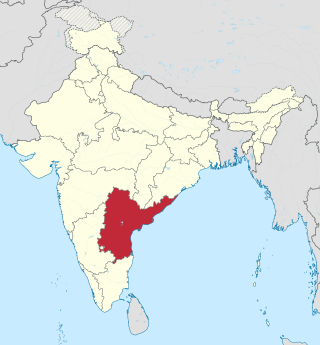
Andhra Pradesh, retrospectively referred to as United Andhra Pradesh, Undivided Andhra Pradesh or Ummadi Andhra Pradesh, was a state in India formed by States Reorganisation Act, 1956 with Hyderabad as its capital and was reorganised by Andhra Pradesh Reorganisation Act, 2014. The state was made up of three distinct cultural regions of Telangana, Rayalaseema, and Coastal Andhra. Before the 1956 reorganisation, Telangana had been part of Hyderabad State ruled by Nizam of Hyderabad, whereas Rayalaseema and Coastal Andhra had been part of Andhra State, formerly a part of Madras Presidency ruled by British India.













